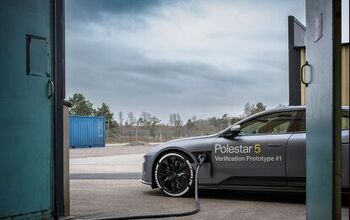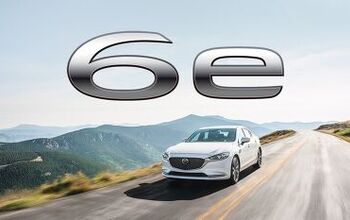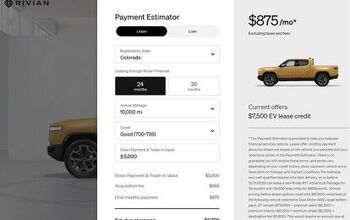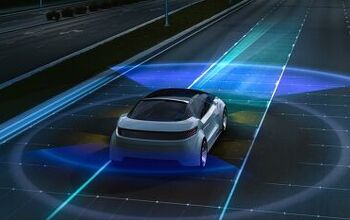Second Opinion: Are EVs Actually Green?
What could be greener than driving a car which produces zero tailpipe emissions?
That’s the overarching message associated with any marketing campaign for electric vehicles since they first hit the modern mainstream in the mid-90s. It’s become the default impression that the general public has had of battery-powered vehicles as an alternative to gas and diesel, and it has fueled billions of dollars in government subsidies designed to encourage the production and purchase of electric cars.
Are electric vehicles actually green? Or is this a case where the image portrayed by the gas-free operation of these cars and SUVs masks a larger narrative concerning energy sourcing and production realities?
Well-To-Wheel
Using electricity instead of internal combustion to motivate a vehicle is only ‘clean’ if, in the process, you aren’t simply passing the fossil fuel buck further down the line.
What does that mean? You have to consider the source of the electricity that an EV is using to operate before it can be truly labeled ‘zero emissions.’ For example, if you live in an area where the vast majority of electricity is generated via hydro, then yes, you’re doing an end-run around fossil fuels by driving an electric vehicle. The same is true if you can rely on another renewable source of energy such as solar or wind power.
Unfortunately, the vast majority of electricity available in North America is derived from natural gas and coal-fired plants – just over 60 percent, in fact. If you plug into the wall, and that wall is fed by coal, you’re simply transferring your carbon footprint from your commute to the power plant.
There is a bit of good news here about electric cars, however, regardless of their power source. The above scenarios represent a very simplified view of power generation and delivery – in reality, the carbon costs associated with transporting oil from the field to the refinery, to the pump have to be factored in as well. Once you start doing that, even dirtier electrical sources can help an electric car outperform an internal combustion vehicle over the long term from an emissions perspective, assuming tens of thousands of miles of driving as in this German study (Germany has only slightly less reliance on coal than the U.S. for its power generation needs).
A Nasty Business
The emissions question concerning electric vehicles is an interesting one, because it does offer customers the chance to make an informed choice about the electricity source they will be using, and therefore decide for themselves how comfortable they are with the carbon footprint that comes with it. When it comes to the production of EVs, however, the situation is far more dire – and there are no obvious solutions in sight.
The issue? Electric vehicles frequently require the use of rare earth elements in their battery designs and electrical systems, and the mining of these must-have minerals is an absolute disaster in terms of environmental damage. Some types of mining discard 99.8% of heavily contaminated materials dug out of the ground during mining, severely contaminating large regions of the planet.
There’s also the huge amounts of energy associated with digging out and then processing the minerals, too – all of which casts a huge carbon shadow over the batteries sitting in each and every EV. Studies peg the cost of a single kilowatt hour of battery capacity at between 276 pounds and 440 pounds of carbon emissions – a number you can multiply by 20 to measure the impact of even the smallest electric vehicle power source currently available.
Recycling of EV batteries is another major concern, given the toxicity of their make-up. Almost universally banned from landfills and dumps, the industry is hard at work inventing new and more effective ways to reuse battery components – and not a moment too soon. While electric vehicle sales might only be a footnote today, if the future includes millions of battery-powered models, a recycling infrastructure must be put in place before the end-of-life tsunami hits.
Better, Not Best
What’s the take-away here? It’s clear that electric cars are not zero emissions vehicles, as even vehicles plugged into a renewable power grid still bear a significant carbon burden (and environmental toll) attached to their production.
More accurately, EVs should be viewed as potentially producing fewer carbon emissions as compared to a gasoline vehicle, over the course of their entire lifetimes. It’s an important distinction to make because ignoring the very real ecological issues associated with electric car use and manufacturing makes it impossible to reduce the damage done. The more attention that is focused on this particular problem, and the smaller and smaller that asterisk beside the ‘green’ label on your next electric car will get.
More by Benjamin Hunting



































Comments
Join the conversation
This is a poorly written article.
Most people know making EVs and charging EVs is not pollution free. If you're making electricity with huge boilers using natural gas or coal you can capture carbon emissions or improve efficiencies at the source. It is very convenient to charge at home. During an emergency we all don't have to pile-up at gas stations. Also, cities continue to grow with more vehicles on the road. Noise from ICE motors with loud mufflers is a huge annoyance. Some people really are assholes with their muffler modifications. EVs are apparently also easier to repair because there's less parts. Older ICE motors leak motor oil all over the place. One drop of oil can ruin drinking water. Our societies definitely have to become much better at recycling. Every product for sale has to have a recycle plan.